#Dorris Bowdon
Explore tagged Tumblr posts
Text

Dorris Bowdon-Henry Fonda "Las uvas de la ira" (The grapes of wrath) 1940, de John Ford.
4 notes
·
View notes
Text
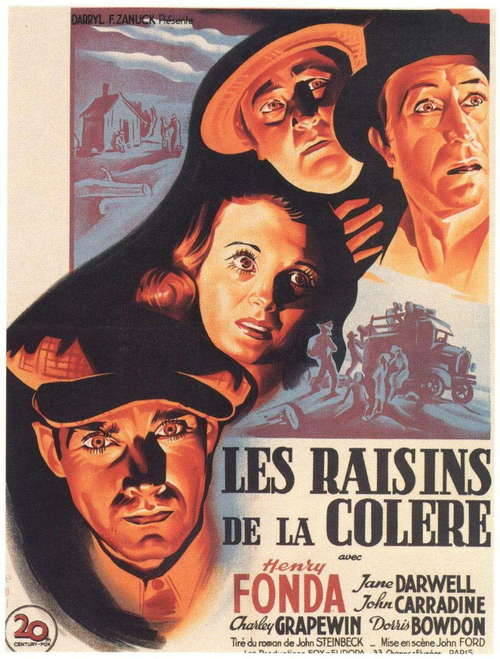
Movie poster by Constantin Belinsky for the December 1947 release of the 20th Century Fox feature film Les Raisins de la Colère.
#movie poster#Constantin Belinsky#Les Raisins de la Colère#The Grapes of Wrath#20th Century Fox#1940 movies#Henry Fonda#Dorris Bowdon#Jane Darwell#John Carradine
2 notes
·
View notes
Text

Now showing on DuranDuranTulsa's Classic Theater 🎥 ...The Grapes Of Wrath (1940) on glorious vintage VHS 📼! #movie #movies #drama #TheGrapesOfWrath #oklahoma #dustbowl #johnsteinbeck #HenryFonda #JaneDarwell #johncarradine #dorrisbowdon #Robertshaw #vintage #VHS #40s #route66 #durandurantulsa #durandurantulsasclassictheater
#movie#movies#drama#the grapes of wrath#john steinbeck#oklahoma#dustbowl#route 66#henry fonda#jane darwell#john carradine#dorris bowdon#Robert Shaw#40s#vintage#vhs#duran duran tulsa's classic theater#duran duran tulsa
0 notes
Text
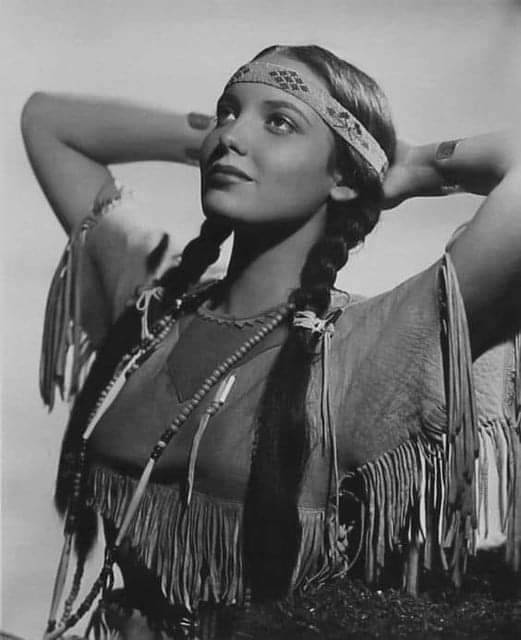
Linda Darnell (born Monetta Eloyse Darnell; October 16, 1923 – April 10, 1965) was an American actress. Darnell progressed from modeling as a child to acting in theater and film. Darnell was born in Dallas, Texas, as one of four children (excluding her mother's two children from an earlier marriage) to postal clerk Calvin Roy Darnell and the former Margaret "Pearl" Brown. One of her maternal great-grandparents was Cherokee. She was the younger sister of Undeen and the older sister of Monte Maloya and Calvin Roy, Jr..
Her parents were not happily married, and she grew up as a shy and reserved girl in a house of domestic turmoil.Starting at an early age, her mother, Pearl, had big plans for Darnell in the entertainment industry.She believed that Linda was her only child with potential as an actress and ignored the rearing of her other children.Unlike her husband, Pearl had a notorious reputation in the neighborhood of being "aggressive" or "downright mean."
Despite some financial problems, Darnell insisted that she had had a joyful childhood and loving parents. Darnell was a model by the age of 11 and was acting on the stage by the age of 13. She initially started modeling to earn money for the household and performed mostly in beauty contests.In November 1937, a talent scout for 20th Century Fox arrived in Dallas looking for new faces ...
Encouraged by her mother, Darnell met him, and after a few months he invited her for a screen test in Hollywood. Arriving in California alongside Mary Healy and Dorris Bowdon in February 1938, Darnell initially was rejected by film studios and was sent home because she was declared "too young."
7 notes
·
View notes
Text

Druma Along The Mohawk 1939
#drums along the mohawk#claudette colbert#henry fonda#edna may oliver#eddie collins#john carradine#dorris bowdon#arthur shields#robert lowery#francis ford#ward bond#russell simpson#tom tyler#roger imhof#kay linaker#spencer charters#si jenks#jack pennick#arthur aylesworth#chief john big tree#charles tannen#paul mcvey#tiny jones#beulah hall jones#edwin maxwell#george huggins#nobel johnson#frank baker#payne b johnson#western movie
11 notes
·
View notes
Text
'Drums Along the Mohawk' - John Ford's Colonial America on Criterion Channel
‘Drums Along the Mohawk’ – John Ford’s Colonial America on Criterion Channel
John Ford made his Technicolor debut with Drums Along the Mohawk (1939), a stunning pre-western about young settlers in the rich forest lands of the Mohawk Valley during the Colonial era. Claudette Colbert takes top billing as the cultured wife and Henry Fonda is her salt-of-the-Earth husband who takes her out of the city and into the wilds. When he leaves to fight the war of independence, she…

View On WordPress
#1939#Arthur Shields#Blu-ray#Claudette Colbert#Criterion Channel#Dorris Bowdon#Drums Along the Mohawk#DVD#Edna May Oliver#Francis Ford#Henry Fonda#Jessie Ralph#John Carradine#John Ford#Lamar Trotti#Sonya Levien#VOD#Ward Bond
1 note
·
View note
Photo

The Moon Is Down (1943)
How do novelists follow up when they have written some of the greatest or most beloved books of all time? It isn’t easy, and expectations can be burdensome. John Steinbeck wrote The Grapes of Wrath in 1939 (which followed 1937′s Of Mice and Men), earning him a Pulitzer and a permanent place in the American literary pantheon. With two great American novels in his bibliography, Steinbeck then set out to write something unlike he had imagined before. Enter The Moon Is Down, a mostly-forgotten, slender 1942 novel about Nazis occupying a defenseless Norwegian town that even Steinbeck was dissatisfied with. Despite being lesser Steinbeck, 20th Century Fox paid $300,000 (more than $4 million in 2016 USD) for film adaptation rights – the highest such fee paid by any Hollywood studio at that time. Directed by Irving Pichel, The Moon Is Down stars Cedric Hardwicke, Henry Travers, Lee J. Cobb, Dorris Bowdon, Margaret Wycherly, and Peter van Eyck. Screenwriter Nunnally Johnson, who was friends with Steinbeck, asked for advice on the adaptation. Steinbeck, who barely disguised his contempt for his own work, suggested Johnson to, “tamper with it.”
An unnamed Norwegian village is conquered by a Nazi battalion led by Colonel Lanser (Hardwicke) in hopes to secure the local mine for warmongering purposes. The village’s militia – just over a dozen men – are slaughtered quickly, and German troops take over. The popular Mayor Orden (Travers) and local doctor, Albert Winter (Cobb), who remind Lanser and his deputies that their fellow citizens are unaccustomed to the ways of war, begrudgingly accept Nazi rule. But Orden, Winter, and other village leaders will not acquiesce, instead tacitly supporting efforts to undermine the Nazis’ exploitative, authoritarian ways. A somewhat, barely romantic subplot between Lieutenant Tonder (van Eyck) and Molly Morden (Bowdon) contests the durability of the relationship between the soldiers and the villagers, and is easily the most awkward segment in the film.
Steinbeck’s novel was also commissioned by the Office of Strategic Services (OSS) – a predecessor of the Central Intelligence Agency (CIA) – to counter Nazi propaganda within the United States. Steinbeck might not have been an ideal choice as an intelligence-gathering implant in the Nazi Party, but he sure as hell could write effectively even at his crappiest. It is in a similar mindset that Irving Pichel’s film adaptation adopts. Pichel’s film maintains the democracy-totalitarian dichotomy in Steinbeck’s writing, as well as the book’s simplistic, indirect argument that totalitarianism can never succeed because it is evil and that democracy is altruistic and good. More direct is its assertion that the suppression of free will through coercive means will always fail. This isn’t particularly enlightening or groundbreaking, yet it does coax some decent performances from actors never getting enough screentime.
Many of the performances in The Moon Is Down feel slightly dialed in. Henry Travers (1942′s Mrs. Miniver and Clarence in 1946′s It’s a Wonderful Life) is always a welcome presence in movies, as he always has been able to project dogged determination despite projecting himself as a meek figure. Weathered by time and experience but confronted with a reality arriving sooner than expected, his Mayor Orden must tend to his fellow villagers while making certain that the Nazi officers will not turn all of their guns towards the populace. Travers doesn’t play the role as morally conflicted – his character takes a firm stance, willing to tell the occupiers what he thinks, but also reminding these soldiers that it is difficult to transition from a mindset of peacetime to that of warfare. Lee J. Cobb (1954′s On the Waterfront, 1957′s 12 Angry Men), meanwhile, is underutilized in an almost identical fashion to his role in The Song of Bernadette (1943; where Cobb is also a local village doctor).
Playing the primary antagonist, Sir Cedric Hardwicke (1944′s The Lodger, 1956′s The Ten Commandments) is the most effective actor in the cast. Rather than play the overused Nazi without heart or compassion, Hardwicke plays a nevertheless icy, but philosophical officer. Attentive to the village’s sentiment, but ruthless when he feels necessary, the bespectacled actor has a decent performance. As Lieutenant Tonder, Peter van Eyck is embellishing his role as the young officer who wants to have a hearty conversation and who lived a life of happiness and openness in rural Germany prior to the war. Van Eyck is overacting, gesturing too wildly, as if combining Rolfe from The Sound of Music (1965; played by Daniel Truhitte) and Maximilian Schell’s impassioned lawyer Rolfe in Judgment at Nuremberg (1961). I understand that van Eyck is playing a character who no longer can distinguish his ideological pride from his personal shame, but the performance (and the writing) is not nuanced enough to inspire much sympathy from the characters onscreen as well as the audience. Most other supporting actors have little but bit parts, with only sufficient performances that simply do the job.
Close observers will notice a young actress playing a girl named Carrie. That girl is Natalie Wood in her (uncredited) screen debut.
Steinbeck’s book, furiously debated among literary critics upon its release, was sharpened by Johnson’s screenplay. Yet Steinbeck’s moralizing and philosophizing remains in the film, which subtracts from the furiousness that Allied audiences watching The Moon Is Down must have felt with reassurances that democracy, humanity, and government for the people by the people will prevail because such things are a good. There is no question that The Moon Is Down is a propaganda film, but Pichel, Johnson, and Steinbeck will leave the bluntness and razor-sharp visual and verbal attacks for the Why We Fight series instead. Perhaps the most powerful images in The Moon Is Down – shot amid the enormous mining town set used in How Green Was My Valley (1941) – are its two execution scenes. The Norwegian villagers, looking on in two separate occasions, ring into spontaneous choruses of Martin Luther’s “A Mighty Fortress Is Our God” and the Norwegian national anthem (the diegetic music proves more powerful than Alfred Newman’s competent score). The cameras and the music do all the work that simple dialogue could not. How this film could have used more such stirring sequences.
All commercially available prints of The Moon Is Down – most recently, its 2013 DVD release from 20th Century Fox Cinema Archives – are in substandard visual and aural condition. From an almost unexplored corner of literary and Hollywood history, Irving Pichel’s The Moon Is Down is strongly recommended for scholars of Hollywood propaganda during World War II as well as fans of the actors that appear in the film. It is not the most effective piece in those traditions, but there is enough material here that treads on ground believed to be uncovered.
My rating: 7/10
^ Based on my personal imdb rating.
#The Moon Is Down#Irving Pichel#Cedric Hardwicke#Henry Travers#Lee J. Cobb#Dorris Bowdon#Margaret Wycherly#Peter van Eyck#Nunnally Johnson#John Steinbeck#Alfred Newman#Natalie Wood#propaganda film#TCM#My Movie Odyssey
1 note
·
View note
Text
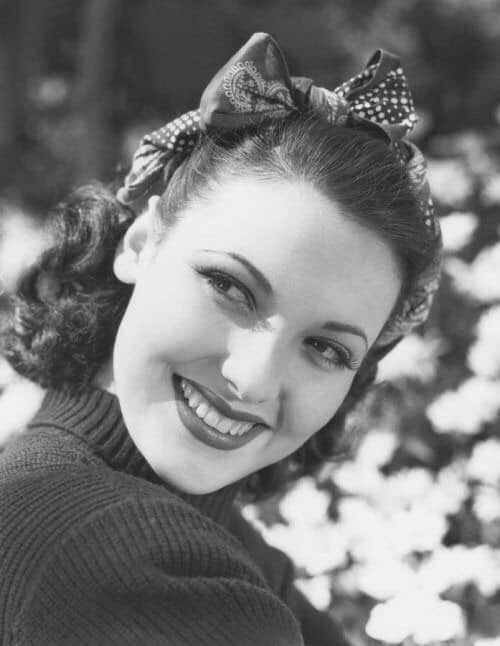
Linda Darnell (born Monetta Eloyse Darnell, October 16, 1923 – April 10, 1965) was an American film actress. Darnell progressed from modeling as a child to acting in theater and film. At the encouragement of her mother, she made her first film in 1939, and appeared in supporting roles in big-budget films for 20th Century Fox throughout the 1940s. She rose to fame with co-starring roles opposite Tyrone Power in adventure films, and established a main character career after her role in Forever Amber (1947). She won critical acclaim for her work in Unfaithfully Yours (1948) and A Letter to Three Wives (1949).
Darnell was born in Dallas, Texas, as one of four children (excluding her mother's two children from an earlier marriage) to postal clerk Calvin Roy Darnell (1888–1977) and the former Margaret "Pearl" Brown (1892–1966). She was the younger sister of Undeen (b. 1918) and the older sister of Monte Maloya (b. 1929) and Calvin Roy, Jr. (b. 1930). Her parents were not happily married, and she grew up as a shy and reserved girl in a house of domestic turmoil. Starting at an early age, her mother, Pearl, had big plans for Darnell in the entertainment industry. She believed that Linda was her only child with potential as an actress and ignored the rearing of her other children.
According to her siblings, Darnell enjoyed the limelight and shared her mother's dream.[1]:19 Darnell once said: "Mother really shoved me along, spotting me in one contest after another. I had no great talent, and I didn't want to be a movie star particularly. But Mother had always wanted it for herself, and I guess she attained it through me." One elocution teacher recalled: "[Darnell] didn't stand out particularly, except that she was so sweet and considerate. In her theater work, she wasn't outstanding, but her mother was right behind her everywhere she went."
Unlike her husband, Pearl had a notorious reputation in the neighborhood of being "aggressive" or "downright mean". Despite some financial problems, Darnell insisted that she had had a joyful childhood and loving parents. Darnell was a model by the age of 11 and was acting on the stage by the age of 13. She initially started modeling to earn money for the household and performed mostly in beauty contests.
Before leaving school for Hollywood, Darnell was a student at Sunset High School, which she entered in September 1937, majoring in Spanish and art. She did not have a lot in common with her peers and usually spent her time at home as a teen, working under the guidance of her mother. In 1936, she entered the Dallas Little Theater and was cast in the southwestern premiere of Murder in the Cathedral. The same year, she was hired as one of the hostesses at the Texas Centennial Exposition.
In November 1937, a talent scout for 20th Century Fox arrived in Dallas looking for new faces. Encouraged by her mother, Darnell met him, and after a few months he invited her for a screen test in Hollywood. Arriving in California alongside Mary Healy and Dorris Bowdon in February 1938, Darnell initially was rejected by film studios and was sent home because she was declared "too young".
Although originally wanting to become an actress on the stage, Darnell was featured in a Gateway to Hollywood talent search and initially landed a contract at RKO Pictures. There was no certainty, though, and she soon returned to Dallas. When 20th Century-Fox offered her a part, Darnell wanted to accept, but RKO was unwilling to release her. Nevertheless, by age 15 she was signed to a contract at 20th Century-Fox and moved to a small apartment in Hollywood all alone on April 5, 1939. With production beginning in April 1939, she was featured in her first film, Hotel for Women (1939), which had newspapers immediately hailing her as the newest star of Hollywood. Loretta Young was originally assigned to play the role, but she demanded a salary which the studio would not give her. Darryl F. Zanuck instead cast Darnell "because he felt that the name would advertise her beauty and suggest a Latin quality that matched her coloring."
Although only 15 at the time, Darnell posed as a 17-year-old and was listed as 19 years old by the studio. According to columnist Louella O. Parsons, Darnell was "so young, so immature and so naive in her ideas" and was very loyal to her boss, Darryl F. Zanuck. Her true age came out later in 1939, and she became one of the few actresses under the age of 16 to serve as leading ladies in films. While working on Hotel for Women, Darnell was cast alongside Henry Fonda and Claudette Colbert in Drums Along the Mohawk (1939) in June 1939. She was later replaced because the studio felt her role was not important enough. In an interview during production of Hotel for Women, which lasted until June, Darnell admitted that movie making was not what she expected: "I'm learning what really hard work is. At home in Dallas I used to sprawl on the lawn and dream about the nice, easy time the screen stars must be having in Hollywood, but the last two months have taught me quite another story."
Since the beginning of her career at 20th Century-Fox, Darnell had been very positive about her frequent co-star Tyrone Power. In a 1939 interview, she expressed her interest in starring opposite Power in Johnny Apollo (1940). Rationalizing why she was not cast, Darnell said: "It's a man's part and the girl's role is only incidental." Dorothy Lamour was cast, instead. Nevertheless, Darnell had her way, as she was assigned to the female lead opposite Power in the light romantic comedy Day-Time Wife (1939). Although the film received only slightly favorable reviews, Darnell's performance was received positively, with one critic saying: "Despite her apparent youth, [Darnell] turns in an outstanding performance when playing with popular players." Another critic wrote: "little Linda is not only a breath-taking eyeful, but a splendid actress, as well." Life magazine stated that Darnell appeared to be 22 and was "the most physically perfect girl in Hollywood". Following the film's release, she was cast in the drama comedy Star Dust in December 1939. The film was hailed as one of the "most original entertainment ideas in years" and boosted Darnell's popularity, who was nicknamed "Hollywood's loveliest and most exciting star". Variety said: "Miss Darnell displays a wealth of youthful charm and personality that confirms studio efforts to build her to a draw personality." Her studio contract had been revised to allow Darnell to earn $200 a week.
At first, everything was like a fairy tale coming true. I stepped into a fabulous land where, overnight, I was a movie star. In pictures you're built up by everyone. On the set, in the publicity office, wherever you go, everyone says you're wonderful. It gives you a false sense of security. You waltz through a role, and everywhere you hear that you are beautiful and lovely, a natural-born actress. You believe what people around you say.
After appearing in several small films, Darnell was cast in her first big-budget film in May 1940, appearing again opposite Tyrone Power in Brigham Young (1940), which was shot on location in mid 1940 and was regarded as the most expensive film 20th Century Fox had yet produced. Darnell and Power were cast together for the second time owing to the box office success of Day-Time Wife, and they became a highly publicized onscreen couple, which prompted Darryl F. Zanuck to add 18 more romantic scenes to Brigham Young.[13] The film's director, Henry Hathaway, in later life had only slight memories of Darnell but recalled that "a sweeter girl never lived." By June 1940, shortly after completing Brigham Young, Darnell achieved stardom and earned "a weekly salary larger than most bank officials."
In the summer of 1940, Darnell began working on The Mark of Zorro (1940), in which she again co-starred as Power's sweetheart in a role for which Anne Baxter was previously considered. A big-budget adventure film that was raved over by the critics, The Mark of Zorro was a box office sensation and did much to enhance Darnell's star status. Afterwards, she was paired with Henry Fonda for the first time in the western Chad Hanna (1940), her first Technicolor film. The film received only little attention, unlike Darnell's next film, Blood and Sand (1941), which was shot on location in Mexico and in which she was reteamed with Power. It was the first film for which she was widely critically acclaimed. Nevertheless, Darnell later claimed that her downfall began after Blood and Sand. In an interview she said:
People got tired of seeing the sweet young things I was playing and I landed at the bottom of the roller coaster. The change and realization were very subtle. I'd had the fame and money every girl dreams about—and the romance. I'd crammed thirty years into ten, and while it was exciting and I would do it over again, I still know I missed out on my girlhood, the fun, little things that now seem important.
The studio was unable to find Darnell suitable roles. In late 1940, Fox chose her for the main role in Song of the Islands (1942), a Hawaiian musical film which eventually starred Betty Grable. After Blood and Sand, she was set to co-star with Claudette Colbert in Remember the Day (1941), but another actress was eventually cast. Meanwhile, she was considered for the female lead in Swamp Water (1941), but Anne Baxter was later assigned the role. Darnell was disappointed and felt rejected; she later said: "Right under your very nose someone else is brought in for that prize part you wanted so terribly." Months passed by without any work, and in August 1941 she was cast in a supporting role in the musical Rise and Shine (1941). The film was a setback in her career, and she was rejected for a later role because she refused to respond to Darryl F. Zanuck's advances. Instead, she contributed to the war effort, working for the Red Cross and selling war bonds. She was also a regular at the Hollywood Canteen.
In early 1942, Darnell filmed The Loves of Edgar Allan Poe, another film that would not do much to improve her career. Meanwhile, she realized that Darryl F. Zanuck had lost interest in her, and she was overlooked for most film roles that suited her. Instead, she was cast in roles that she loathed, including the musical Orchestra Wives (1942). Zanuck insisted that she take the role, but she was replaced by Ann Rutherford after 12 days of shooting. The press reported that "Linda Darnell and Twentieth Century-Fox aren't on the best of terms at the moment." As a punishment, she was loaned out to another studio for a supporting role in a B movie called City Without Men. According to co-star Rosemary DeCamp, Darnell nevertheless was "very polite", and she was satisfied to work at a studio which did not treat her as a child. In April 1943, she was put on suspension, which meant being replaced in the Technicolor musical film The Gang's All Here (1943). By this time, Darnell had eloped, which caused Zanuck to be even more furious.
In 1943, she was cast, uncredited, as the Virgin Mary in The Song of Bernadette. By late 1943, Darnell was fed up with critics only praising her beauty rather than her acting abilities. Judging her performance in Sweet and Low-Down (1944), in which she co-starred with Lynn Bari, one critic of the Los Angeles Examiner wrote, "Lynn comes off the best because she has more of a chance to shine. Linda just doesn't have enough to do—but looks beautiful doing it." Darnell was reduced to second leads and was overlooked for big-budget productions. Matters changed when she was named one of the four most beautiful women in Hollywood along with Hedy Lamarr, Ingrid Bergman, and Gene Tierney in a 1944 edition of Look. Afterwards, the studio allowed her to be loaned out for the lead in Summer Storm. Portraying a "seductive peasant girl who takes three men to their ruin before she herself is murdered," it was a type of role she had never before played. In a later interview, Darnell commented:
I was told that such a violent change of type might ruin my career, but I insisted on taking the chance. This is one picture on which I am setting much store for the future. For eighteen months I did nothing in pictures. I pleaded for something to do, but nothing happened. The character in the Chekhov film is a wild sort of she-devil, which any actress would go miles to play. She's devil mostly—at times angelic—and perfectly fascinating to interpret. I'm counting on my Russian girl to give me a new start.
Released in 1944, the film provided her a new screen image as a pin-up girl. Shortly after, Darnell was again loaned out to portray a showgirl in The Great John L., the first film to feature her bare legs. Darnell complained that the studio lacked recognition of her, which prodded Zanuck to cast her in Hangover Square (1945), wherein she played a role she personally had chosen. The film became a great success, and with Darnell's triumph assured, she was allowed to abandon her upcoming film, Don Juan Quilligan (1945), which would have been another low point in her career. In January 1945, she was added to the cast of the film noir Fallen Angel (1945), which also included Dana Andrews and Alice Faye. Despite suffering from the "terrifying" director Otto Preminger, Darnell completed the film and was praised by reviewers so widely that there was even talk of an Oscar nomination. Because of her success in Fallen Angel, she was cast opposite Tyrone Power in Captain from Castile in December 1945 on the insistence of Joseph L. Mankiewicz. Although she looked forward to the film project, believing it would be her most important to date, she was later replaced by newcomer Jean Peters owing to scheduling conflicts, a decision she resented.
In 1946, Darnell filmed two pictures simultaneously, the expensively budgeted Anna and the King of Siam and Preminger's Centennial Summer. During the release of the latter, she was on location in Monument Valley for the filming of the classic Western My Darling Clementine (1946), playing a role for which she lost 12 pounds. She was assigned to a negligible role by Zanuck, which displeased the film's director, John Ford, who felt that she was not suitable.
In 1946, Darnell won the starring role in the highly anticipated movie Forever Amber, based on a bestselling historical novel that was denounced as being immoral at that time. The character Amber was so named because of her hair color, and this is the only major film in which Darnell—normally known for her raven hair and somewhat Latin looks—appears as a redhead. It was the most expensive film yet produced by Fox, and publicity at the time compared the novel to Gone with the Wind. Darnell replaced British actress Peggy Cummins in July 1946 at a cost of $350,000. Because $1 million had already been spent on production costs when Darnell was brought in, the pressure was intense to make the film a financial success. Her casting was a result of a campaign for stronger roles. Regardless, she was surprised to find out that she had been cast, because she had been intensively rehearsing for Captain from Castile at the time. Although she had to give up that role and work with Otto Preminger, she was delighted to play the title role and thought she was "the luckiest girl in Hollywood."
The search for the actress to portray Amber, a beauty who uses men to make her fortune in 17th century England, was modeled on the extensive process that led to the casting of Vivien Leigh as Scarlett O'Hara. Production demanded a lot from Darnell. She was again put on a diet and was assigned to a voice coach to learn how to speak with an English accent. In addition, she spent hours in fittings for costume changes. Darnell was certain that Forever Amber would be her ticket to stardom, and she told reporters:
My first seven years in Hollywood were a series of discouraging struggles for me. For a while it looked as though the Darnell-versus-Hollywood tussle was going to find Darnell coming out second best. The next seven years aren't going to be the same.
Darnell worked long hours at the studio during filming, and according to her older sister she started loathing Preminger, which did not ease production. This and the heavy dieting resulted in exhaustion and a serious illness in November 1946.[1]:100 Her shooting schedule lasted until March 1947, and she collapsed on the set twice. Forever Amber did not live up to its hype, and although it became a success at the box office, most reviewers agreed that the film was a disappointment. Darnell was disappointed in the film's reception; it did not gain her the recognition for which she longed.
The following year, Darnell portrayed Daphne de Carter in the Preston Sturges' comedy Unfaithfully Yours (1948), also starring Rex Harrison, and was then rushed into production as one of the three wives in the comedy/drama A Letter to Three Wives (1949). Darnell's hard-edged performance in the latter won her unanimous acclaim and the best reviews of her career. Darnell became one of the most in-demand actresses in Hollywood, and she now had the freedom to select her own roles. She longed for the leading role in the controversial film Pinky (1949), but Zanuck feared that her character would be compared to Amber by the audience, and A Letter to Three Wives co-star Jeanne Crain was cast instead.
Darnell had been widely expected to win an Academy Award nomination for A Letter to Three Wives; when this did not happen, her career began to wane. She was cast opposite Richard Widmark and Veronica Lake in Slattery's Hurricane (1949), which she perceived as a step down from the level she had reached with A Letter to Three Wives, though it did well at the box office.
Aside from her co-starring role opposite Richard Widmark, Stephen McNally and Sidney Poitier in the groundbreaking No Way Out (1950), directed by Joseph L. Mankiewicz, which she later called "the only good picture [she] ever made," her later films were rarely noteworthy, and her appearances were increasingly sporadic. Further hampering Darnell's career was the actress's alcoholism and weight gain. Her next film was a Western, Two Flags West (1950). Due to her allergy to horses, she loathed making Westerns, and in addition to her complaints about her "colorless" role, she disliked her co-stars Joseph Cotten and Cornel Wilde. She was even less enthusiastic about her next film, The 13th Letter (1951), which reunited her with Preminger, and she only took the role because it was an unglamorous one. Shortly after its release, she was put on suspension for refusing a role in the film The Guy Who Came Back (1951) opposite Paul Douglas and Joan Bennett because it felt "too similar." She later consented to take on the glamor role, but she refused to bleach her hair for it.
On March 21, 1951, Darnell signed a new contract with 20th Century Fox that allowed her to become a freelance actress. Her first film outside 20th Century-Fox was The Lady Pays Off for Universal Pictures (1951) after Douglas Sirk requested her for the lead role. She was responsible for putting the film behind schedule because on the fifth day of shooting she learned that Ivan Kahn, the man responsible for her breakthrough, had died. After The Lady Pays Off, Darnell headed the cast of Saturday Island (1952), which was filmed on location in Jamaica in late 1951. There, Darnell fell ill and had to be quarantined for several weeks. Because her contract required her to make one film a year for the studio, she reported to the 20th Century-Fox lot in March 1952 and was cast in the film noir Night Without Sleep (1952). It was the only time that she had to live up to this part of her contract, though, since she was released from it in September 1952, most likely because the competition of television forced studios all over Hollywood to drop actors.
This news initially excited Darnell because it permitted her to focus on her film career in Europe. She soon realized, though, that the ease and protection enjoyed under contract was gone, and she came to resent 20th Century-Fox and Zanuck:
Suppose you'd been earning $4,000 to $5,000 a week for years. Suddenly you were fired and no one would hire you at any figure remotely comparable to your previous salary. I thought in a little while I'd get offers from other studios, but not many came along. The only thing I knew how to do was be a movie star. No one expects to last forever in this business. You know that sooner or later the studio's going to let you go. But who wants to be retired at twenty-nine?
Before traveling to Italy for a two-picture deal with Giuseppe Amato, Darnell was rushed into the production of Blackbeard the Pirate (1952), which—much to Darnell's distress—got far behind schedule. She arrived in Italy in August 1952 and started filming Angels of Darkness (1954) in February of the next year. The second collaboration proved disastrous, and the next film was never released in the United States. Owing to a delay in the middle of production, she was sent back to Hollywood and there accepted an offer from Howard Hughes to star in RKO's 3-D film Second Chance (1953), filmed in Mexico. Afterwards, she flew back to Rome to complete Angels of Darkness, in which she spoke Italian. Upon returning to New York, she was under the misunderstanding that she would portray the title role in Mankiewicz's The Barefoot Contessa (1954), believing that the role could carry her to dramatic heights.[1]:138 Through trade papers, she learned that Ava Gardner assumed the part.
Because of her then-husband, Philip Liebmann (grandson of Charles Liebmann of Rheingold Breweries), Darnell put her career on hiatus. She returned to 20th Century-Fox in August 1955, by which time the studio had entered the television field. Darnell was eager to appear on Ronald W. Reagan's General Electric Theater. In 1958, Darnell appeared in the episode "Kid on a Calico Horse" of NBC's Cimarron City along with a cast of other guest stars, including Edgar Buchanan. That same year, she held the guest-starring title role in "The Dora Gray Story" on NBC's Wagon Train. The character of Dora is an attractive young woman trying to reach San Francisco who has inadvertently joined with a gun runner, played by John Carradine, to reach the west. Robert Horton carries the cast lead in the segment, and Mike Connors appears as Miles Borden, Dora's erstwhile love interest, a corrupt United States Army lieutenant bitter over his meager pay of $54 per month. Dan Blocker, more than a year before Bonanza, also guests in this segment.
In addition to television, Darnell returned to the stage. Her last work as an actress was in a stage production in Atlanta in early 1965. (At the time of her death a few months later, she was preparing to perform in another play.)
Since Darnell was underage when she arrived in Hollywood, she was tutored on the sets. She planned on attending graduation ceremonies at Sunset High School, but she was excluded from them and instead graduated from University High School in 1941. Her work schedules prohibited her from enrolling in a university.
In 1940, during the shooting of Star Dust, Darnell for a short time went out with teen idol Mickey Rooney. Her first love was Jaime Jorba, a Mexican whom she met while still in high school. They met again during production of Blood and Sand, but they drifted apart when Jorba announced he could not marry a girl who was in the public eye. Starting at age 17, Darnell dated her publicity agent, Alan Gordon, whom she allegedly married in a double wedding with Lana Turner and Joseph Stephen Crane on July 17, 1942. The report turned out to be false, and over the years Darnell became known as "filmland's most eligible bachelorette." Up to 1942, she dated Kay Kyser, Eddie Albert, George Montgomery, and Jackie Cooper, among others. At one point, she was set to elope with talent agent Vic Orsatti, only to report later that she was "concentrating on her career."
Although a well-loved figure on the 20th Century-Fox lot among the cast, crew, and lot workers, it was reported that Darnell made only one good friend in Hollywood, actress-singer Ann Miller, whom she met at a Catalina Island benefit. Darnell was very negative about the Hollywood social scene, finding it "nauseating". During her stay in Hollywood, her relationship with her mother, Pearl, worsened, as her mother was an unpopular figure on the lot because of her overbearing and possessive behavior. In 1940, Pearl accused her husband of having an incestuous relationship with Evelyn, one of her children, though he was not Evelyn's biological father. Following an intense fight between her parents in 1942, Darnell left home with her younger sister Monte and never returned. Out of spite, Pearl turned to the press, which gained Darnell some bad publicity.
In 1942, Darnell was plagued with extortion letters from an unknown person threatening her with bodily harm unless $2,000 was paid immediately. The studio asked the FBI to protect the actress, and eventually a 17-year-old high school student was arrested for the crime.
On April 18, 1943, at age 19, Darnell eloped with 42-year-old cameraman Peverell Marley in Las Vegas. Darnell and Marley started seeing each other in 1940, and the press dismissed him as her "devoted friend and escort." Most friends and relatives, including her parents, and 20th Century-Fox disapproved of the marriage, and Darnell was believed to look at Marley more as a father figure than as a romantic interest. Marley was a heavy drinker and introduced Darnell to alcohol in 1944, which eventually led to an addiction and weight problems. Neighbors and acquaintances recalled the drastic change she underwent in this period, becoming hardened and hot- tempered. In 1946, during production of Centennial Summer, she repeatedly met with Howard Hughes. Although she initially disregarded gossip of an affair, she fell in love with the womanizing millionaire and separated from Marley shortly after finishing My Darling Clementine. When Hughes announced that he had no desire to marry her, Darnell returned to her husband and cancelled divorce proceedings. Shortly after the reunion, her health worsened, caused by the tough production of Forever Amber (1947).
Because Darnell and Marley were unable to have children, they adopted a daughter in 1948, Charlotte Mildred "Lola" Marley (born January 5, 1948), the actress's only child. She also planned to adopt a boy within a few years, but nothing ever came of it. In mid 1948, she became romantically involved with Joseph L. Mankiewicz, the director of A Letter to Three Wives, and in July 1948 she filed for divorce. Mankiewicz, however, was unwilling to leave his wife for Darnell, and though the affair continued for six years, she returned to her husband. Though she called him the "great love of her life," Mankiewicz never acknowledged the affair; he only mentioned her to his biographer as a "marvelous girl with very terrifying personal problems." In 1949, Darnell went into psychotherapy for hostile emotions that she had been building since childhood. Darnell's romance with Mankiewicz influenced her personal life. When he left in late 1949 for on-location shooting of All About Eve (1950), Darnell fell into a depression and almost committed suicide. She continued to meet with him occasionally until production of The Barefoot Contessa (1954) started.
On January 25, 1949, Darnell went to court to sue her former business manager, Cy Tanner, for fraud. She testified that he stole $7,250 from her between 1946 and 1947, and Tanner was eventually sent to prison. On July 19, 1950, Darnell reportedly separated from her husband. Marley offered a quiet settlement—without mention of Mankiewicz—for a payment of $125,000. She agreed and lost almost all her money. When she filed for divorce from Marley she accused her husband of cruelty, claiming he was "rude" and "critical" towards Darnell and her family. Following a five-minute hearing, Darnell was granted a divorce and custody of Charlotte, while Marley was to pay $75 a month for child support.
At thirty-two, I can see tell-tale marks in the mirror, but the ravages of time no longer terrify me. I am told that when surface beauty is gone, the real woman emerges. My only regret will be that I could not have begun it earlier - that so many years have been ruined because I was considered beautiful.
— Darnell shortly after her divorce from Liebmann.
In her later life, she dated actor Dick Paxton and had an affair with Italian director Giuseppe Amato. She married brewery heir Philip Liebmann in February 1954. owing to her lack of interest in him physically, it was agreed that the marriage would be a business arrangement: she was to be his wife in name only and in return he would support her financially. After a while, she grew dissatisfied with this loveless marriage and detested her husband for allowing her to lash out at him as well as cheapening her by buying her lavish presents. In response, Darnell resorted to charity work, opening facilities accommodating 30 girls in the neighborhood of Rome in 1955. Liebmann attempted to save the marriage by adopting a baby named Alfreda, but the marriage ended nevertheless on grounds of incompatibility, and Liebmann kept the girl.
Darnell was married to pilot Merle Roy Robertson from 1957 to 1963. In 1957, she started drinking heavily and in November 1958 sank into a depression, but went into rehab, recovering for a while. In 1963, Darnell was granted a divorce from Robertson following an outburst in the courtroom, where she accused her third husband of fathering the baby of a Polish actress. She was promised alimony of $350 monthly until July 15, 1964, and then $250 until September 15, 1967.
Darnell died on April 10, 1965, from burns she received in a house fire in Glenview, Illinois, early the day before. She had been staying at the home of her former secretary and her daughter and had just received notice from her agent of three possible movie contracts. She was trapped on the second floor of the home by heat and smoke, as the fire had started in the living room.
The women urged the young girl to jump from the second-floor window. After her daughter jumped, Darnell's secretary stood on the window ledge, calling for help. She had lost track of Darnell and insisted the firefighters rescue her before she was taken from the window ledge. Darnell was found next to the burning living-room sofa and was transferred to the burn unit at Chicago's Cook County Hospital with burns over 80% of her body.
After her death, a man who said he was Darnell's fiancé identified her body. A coroner's inquest into her death ruled that Darnell's death was accidental and that the fire had begun in or near the living-room sofa and was caused by careless smoking; both adult women were smokers.
Darnell's body was cremated; she had wanted her ashes scattered over a ranch in New Mexico, but because of a dispute with the landowners that was not done. After the remains had been in storage for ten years, her daughter asked that they be interred at the Union Hill Cemetery, Chester County, Pennsylvania, in the family plot of her son-in-law.
4 notes
·
View notes
Photo
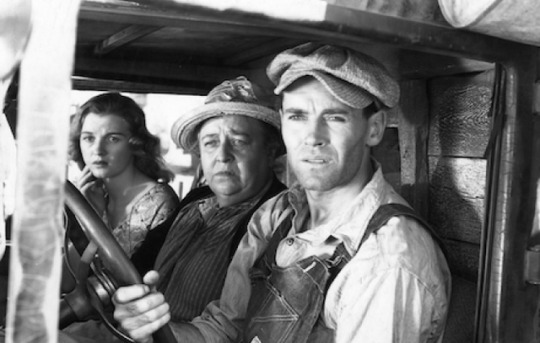
Movie for Sunday afternoon.
#the grapes of wrath#dorris bowdon#jane darwell#henry fonda#watched in '17#rewatch#i can't believe jimmy stole the best actor oscar from his bff
0 notes
Text
Roaring ‘20s economic recovery? For some it'll be 'Grapes of Wrath,' top analyst warns
Roaring ‘20s economic recovery? For some it’ll be ‘Grapes of Wrath,’ top analyst warns
L-R: Dorris Bowdon, Jane Darwell and Henry Fonda on the set of the film “The Grapes of Wrath” directed by John Ford based on the John Steinbeck novel of the same name. Sunset Boulevard | Corbis Historical | Getty Images The anticipated economic boom following the coronavirus pandemic has been likened to the “Roaring ’20s” by some, but a top political analyst has stressed that not everyone will…
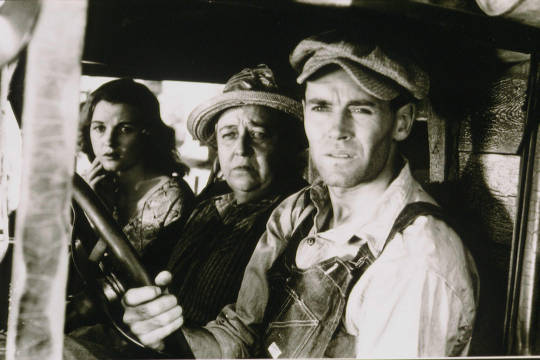
View On WordPress
0 notes
Text

Dorris Bowdon (Coldwater, Mississippi, 27/12/1914-Los Angeles, California, 9/08/2005).
2 notes
·
View notes
Photo

Great Birthday Wishes to Actresses Born on December 27 Emilie De Ravin Heather O'Rourke (1975-1988) Chloe Bridges Olivia Cooke Brittany Anne Pirtle Charmian Carr (1942-2016) Marlene Dietrich (1901-1992) Eva LaRue Elizabeth Rodriguez Lisa Jakub Jessica Harmon Kaitlyn Kaylee Brown Tovah Feldshuh Jayley Woo Melissa Moore Samadhi Zendejas Cinthya Carmona Theresa Randle Maryam d'Abo Patricia Arbues Hayley Woo Candace Kita Dorris Bowdon (1914-2005) Faithe Herman Tyrah Skye Odoms Sara Corrales Diana Khan Sitara Hewitt Barbara Crampton Panchi Bora Lali Gonzalez Fumiko Orikasa Alejandra Perez Kylee Cochran Amber Urban Leanne Wilson Jessica Player Dongyu Zhou Mary Kornman (1915-1973) Cathy Lewis (1916-1968) #EmilieDeRavin #ChloeBridges #OliviaCooke #BrittanyAnnePirtle #EvaLaRue #ElizabethRodriguez #LisaJakub #JessicaHarmon #KaitlynKayleeBrown #TovahFeldshuh #JayleyWoo #MelissaMoore #SamadhiZendejas #CinthyaCarmona #TheresaRandle #Maryamd'Abo #PatriciaArbues #HayleyWoo #CandaceKita #FaitheHerman #TyrahSkyeOdoms #SaraCorrales #DianaKhan #SitaraHewitt #BarbaraCrampton #PanchiBora #LaliGonzalez #FumikoOrikasa #AlejandraPerez #KyleeCochran
1 note
·
View note
Photo
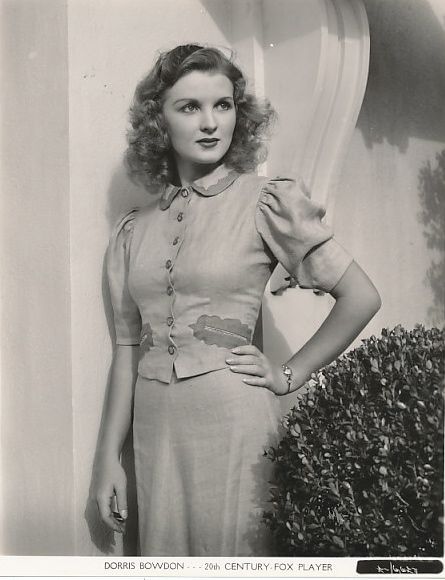
Dorris Bowden Dorris Bowden Biography, Height, Weight, Age, Measurement, Family, Affairs, Net Worth, Career, Profile, Wiki & Much More! Dorris Estelle Bowdon (December 27, 1914 – August 9, 2005) was an American actress, best known for her role as Rosasharn in the film adaptation of John Steinbeck's novel The Gr*pes of Wrath, starring Henry Fonda. Read Full Articles from https://celebs.bio/people/dorris-bowden/
0 notes
Photo

Dorris Bowdon was born on December 27, 1914 in Mississippi under the zodiac star sign of Capricorn. Posted under People Facts. Click here for some more interesting facts and Tumblr quotes.
0 notes
Text
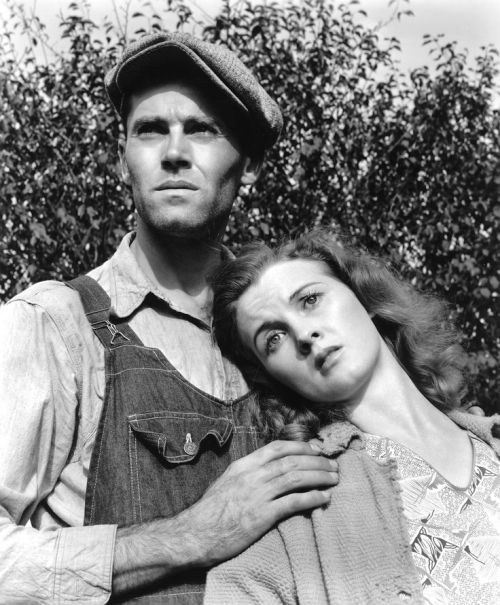
Henry Fonda-Dorris Bowdon "Las uvas de la ira" (The grapes of wrath) 1940, de John Ford.
31 notes
·
View notes
